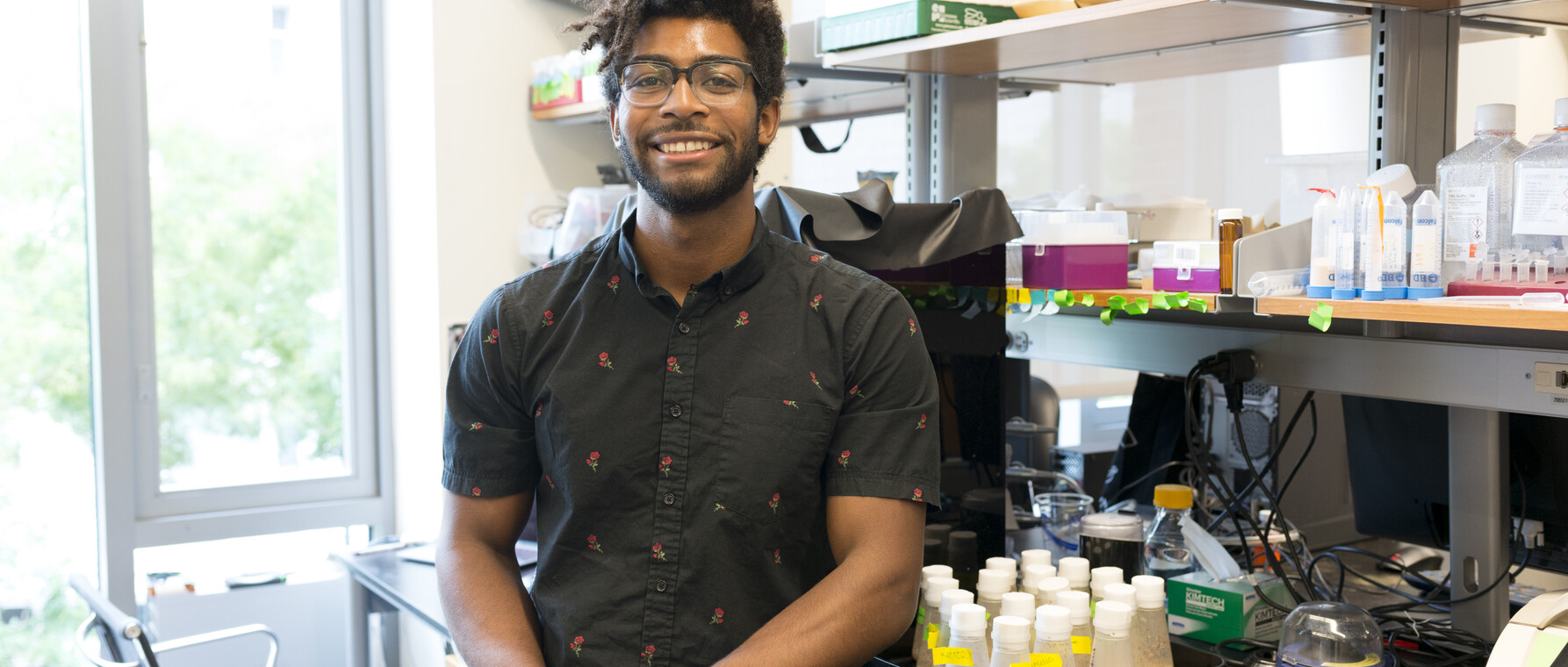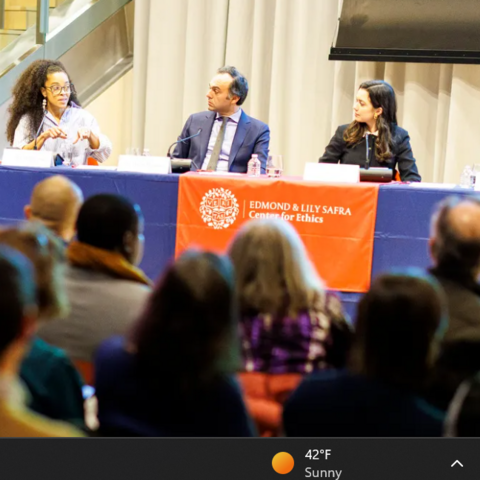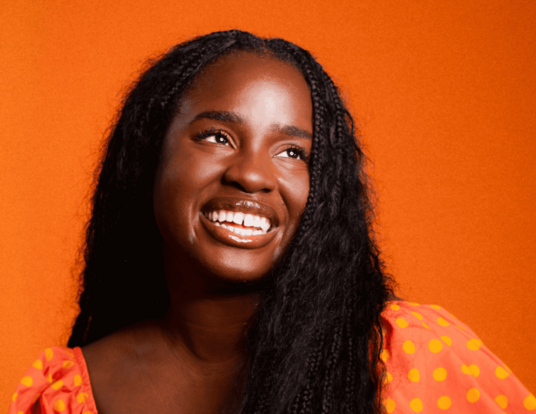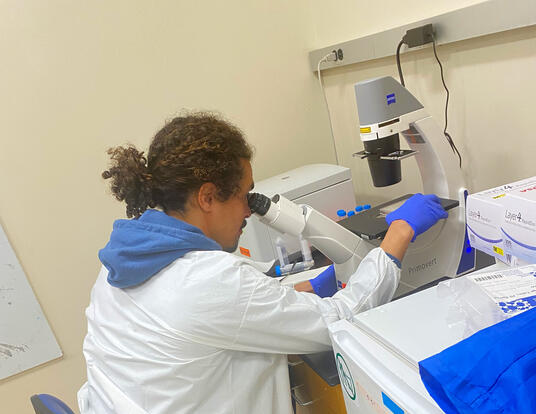Trying Something New
What the brains of fruit flies show us about personality

Matt Smith’s life is full of acronyms. “My PI is part of OEB. And my grad program is MCO, which is based in MCB,” Smith recites. This proliferation of acronyms results from two factors: his graduate program, Molecules, Cells and Organism (MCO), which brings together faculty from five different Harvard departments, including Molecular and Cell Biology (MCB) and Organismic and Evolutionary Biology (OEB); and his own research, which he characterizes as straddling the border between MCB and OEB, both of which are part of HILS, the Harvard Integrated Life Sciences.

Smith is based in the lab of Dr. Benjamin de Bivort, who investigates behavioral neurobiology. “The big question we’re asking is about individuality,” Smith says. “But we frame that in a very OEB way, by looking at it in terms of evolutionary strategy.” Specifically, Smith and the de Bivort lab are interested in deciphering how behavioral diversity could be an evolutionary strategy. “Plasticity, for instance, is an important feature in any population living with fluctuating environmental conditions,” he explains. Essentially, it improves the survival of a population to have individuals with different personalities.
Smith is investigating personality by looking at which neurons in the brains of the fruit fly, Drosophila, fire when the flies are presented with different stimuli. One stimuli, the odor of citronella, causes particularly interesting activation in their brains. “It activates a large portion of the brain, allowing you to see a lot of neural activity,” he says. Previous literature suggested that this neural activity would be virtually identical from one fly to another, but Smith is finding significant differences. “Overall, it’s the same response, but there are variations in terms of the magnitude of this response,” he explains.
When Smith arrived at Harvard he had no idea he would spend his days studying Drosophila brains. “I came in with a plant biophysics background, but I wanted to try something new,” he says. During his first year, he participated in rotations in labs investigating chromosome dynamics, electrophysiology tool development, and synthetic biology before finding the de Bivort Lab and falling for its interdisciplinary nature.
“Ben is the definition of a jack-of-all-trades,” says Smith about his advisor. “His background is in math and biology. He trained as a molecular biologist at MCB, but he’s also part of OEB and has this incredibly knack for evolutionary biology.” De Bivort’s broad interests spill over into his lab, which has allowed Smith to gain a number of skills, from engineering assays for measuring individuality to modeling how the brain perceives odors. “Ben is knowledgeable in all these different areas and being part of his lab, we also become knowledgeable in these areas,” Smith says. It also keeps things interesting. “You’re doing something different all the time, and that is a ton of fun.”
Photos by Molly Akin
Get the Latest Updates
Join Our Newsletter
Subscribe to Colloquy Podcast
Simplecast





